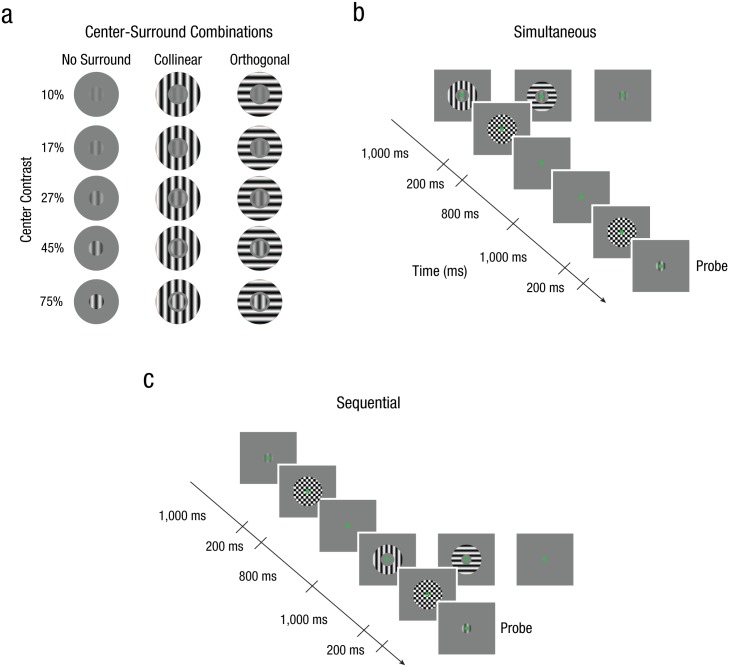Fig. 1.
Stimuli and example trial sequences from Experiment 1. Each stimulus (a) was composed of one of three different surround configurations at five different center contrast levels (10%–75% contrast). Example trial sequences are shown for the simultaneous (b) and the sequential (c) conditions. Observers viewed a center stimulus for 1,000 ms, which varied from trial to trial in contrast and orientation. In both conditions, observers were required to match the contrast of the probe to the remembered center stimulus after a 2,200-ms retention interval. During the simultaneous condition, the center stimulus was enveloped by a full-contrast surround stimulus, which had orientation content that was either collinearly or orthogonally oriented to the center. In the sequential condition, this surround stimulus was moved into the retention interval. After every interval in which a stimulus could appear, a counterphase flickering, full-contrast checkerboard masking stimulus was presented to reduce any lingering afterimages. Stimuli are modified for illustrative purposes.

